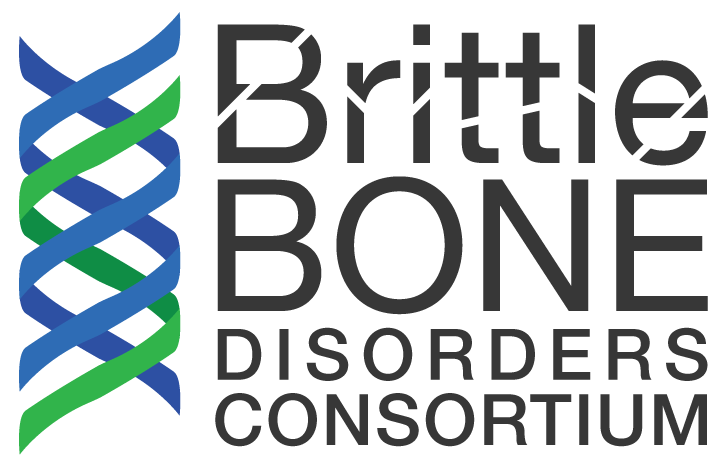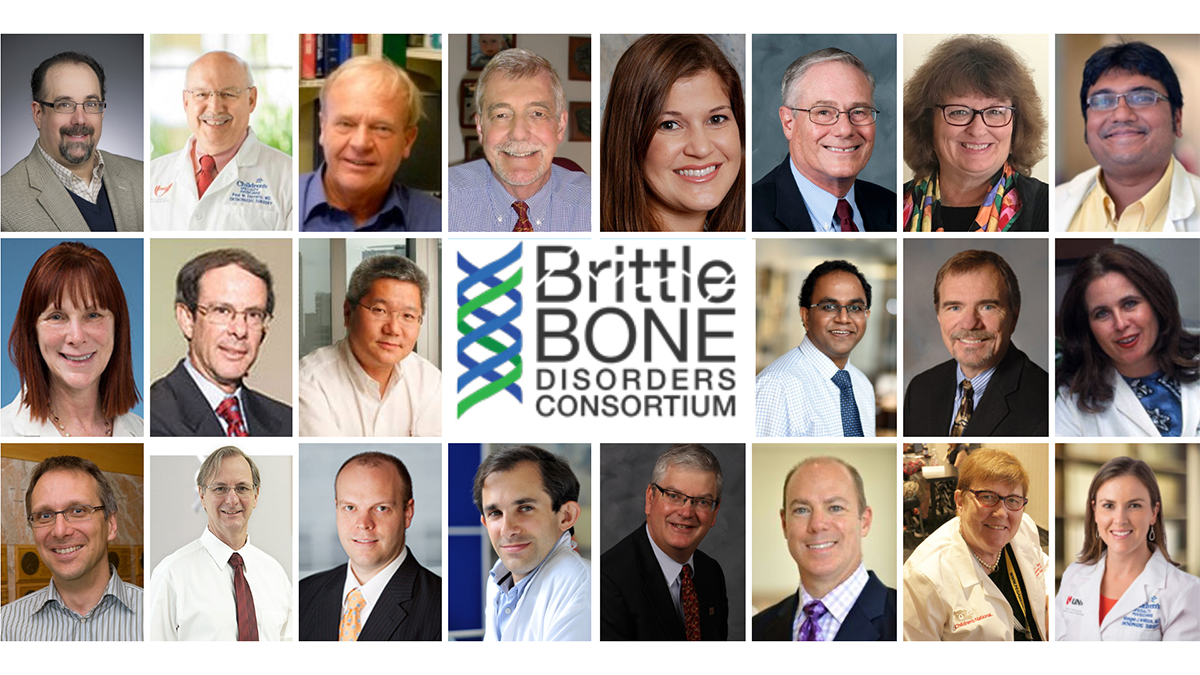The Brittle Bone Disorders Consortium (BBDC) brings together physicians, researchers, and educators to learn more about osteogenesis imperfecta (OI), a genetic disorder that mainly affects the development of the bones. The goal is to develop new and better treatments for patients with OI. Here, principal investigator Brendan Lee, MD, PhD, and Vernon Sutton, MD, share the history of the consortium, current research, and future plans.
How did your consortium team come together, and how did you become a part of RDCRN?
The OI Foundation (OIF) and Children's Brittle Bone Foundation (CBBF) committed to establishing and funding a network of linked clinical research centers. The goal was to advance care and research in OI by establishing a collaborative network across North America. The OIF Linked Clinical Research Centers conducted a four-year longitudinal study of OI and this established the basis and framework, collaborations, and structure for the RDCRN application.
Can you tell us more about the rare disease you study?
We study osteogenesis imperfecta (OI), which is a rare, genetic connective tissue disorder most characterized by bone fragility. There is a great deal of allelic heterogeneity, with over 18 genes that are known to cause OI. In addition, OI is a pleiotropic connective tissue disease that affects more than bone, and the phenotype can be highly variable depending upon genotype. In addition to bone fragility, individuals with OI may have loose joints, bone deformity, scoliosis, hearing loss, dentinogenesis imperfecta, and malocclusion. Individuals with OI also face many other challenges, particularly in regard to chronic pain, mobility, isolation, and transition of care from childhood to adulthood.
What are your current research projects?
We have a great variety of NIH-sponsored projects, reflecting the phenotypic heterogeneity and pleiotropy of OI.
Major projects include:
- Longitudinal study of OI
- Identify phenotypic features of dominant and recessive forms of OI
- Scoliosis – incidence, contributing factors, natural history, and response to therapies
- Vertebral compression fractures in type I (type I collagen haploinsufficient OI) – incidence, contributing factors, and response to therapy
- Describe dental and craniofacial characteristics in various forms of OI
- Understand how pregnancy and lactation affect bone health in women with OI
- Patient-reported outcome measures for measuring the impact of OI on quality of life
- Interventional trial of clear plastic aligners to correct class III malocclusion in severe forms of OI
- Interventional trial of a pan-anti-TGFb antibody in moderate and severe forms of collagen I-related forms of OI
- Study to assess pain, anxiety, and mental health in individuals with OI to develop strategies for improved resiliency and mental health
- Pilot studies of cardiopulmonary health in OI, biomarkers of OI types, and biomarkers of growth in OI
How has your research impacted patients?
We have a great many publications that have improved knowledge and are advancing patient care in OI. The longitudinal studies are providing evidence for approaching preventive and management of the multi-system disease that is OI. In addition to the clinical orthodontic trial mentioned, we completed a phase I clinical trial of an anti-TGF beta antibody in adults with OI as well as a multi-omic study of OI human bone.
What new research directions or goals are you pursuing?
We have recently engaged with an industry partner who is planning a phase 3 clinical trial of an antisclerostin antibody. This biopharma company is using BBDC longitudinal data in planning their clinical trial, including identifying primary and secondary endpoints and defining their statistical analysis plan and enrollment goals. In addition, our anti-TGFb trial has stimulated interest from industry partners in pursuing further validation studies. This research promises to bring new therapies to market for OI patients.
How has being part of the RDCRN impacted the work of your consortium?
The RDCRN has provided an incredible amount of financial and infrastructural support to allow us to accomplish our goals. We are proud to have so many NIH institutes and centers (NCATS, NIAMS, NICHD, NIDCR, and NIMH) supporting our research in OI. This reflects the broad impact of this heritable disorder of connective tissue on many organ systems. In addition, we have had many trainees that have been enriched by young investigator opportunities in the RDCRN.
How do you envision that osteogenesis imperfecta can ultimately be cured?
While a cure would likely be the ultimate improvement in quality of life for individuals with OI, this is a rather lofty goal, at least for right now. We are focused on improving quality of life in OI, which is why we are not focusing only on one issue, but rather looking at many different things that impact health and quality of life in OI.
We are doing this by partnering with the OI Foundation and individuals with OI to align our goals and studies with issues that are important to the OI community. This partnership allows us to make incremental advances on multiple fronts (bone/connective tissue, dental/craniofacial, mental health, and cardiopulmonary health) which together may have a significant cumulative impact on the life of a patient. In addition, conducting early clinical trials and partnering with industry to bring new therapies to the marketplace is also an important focus of our consortium.
The Brittle Bone Disorders Consortium (BBDC) is part of the Rare Diseases Clinical Research Network (RDCRN), which is funded by the National Institutes of Health (NIH) and led by the National Center for Advancing Translational Sciences (NCATS) through its Division of Rare Diseases Research Innovation (DRDRI). BBDC is funded under grant number U54AR068069 as a collaboration between NCATS, the National Institute of Arthritis and Musculoskeletal and Skin Diseases (NIAMS), the Eunice Kennedy Shriver National Institute of Child Health and Human Development (NICHD), and the National Institute of Dental and Craniofacial Research (NIDCR).


